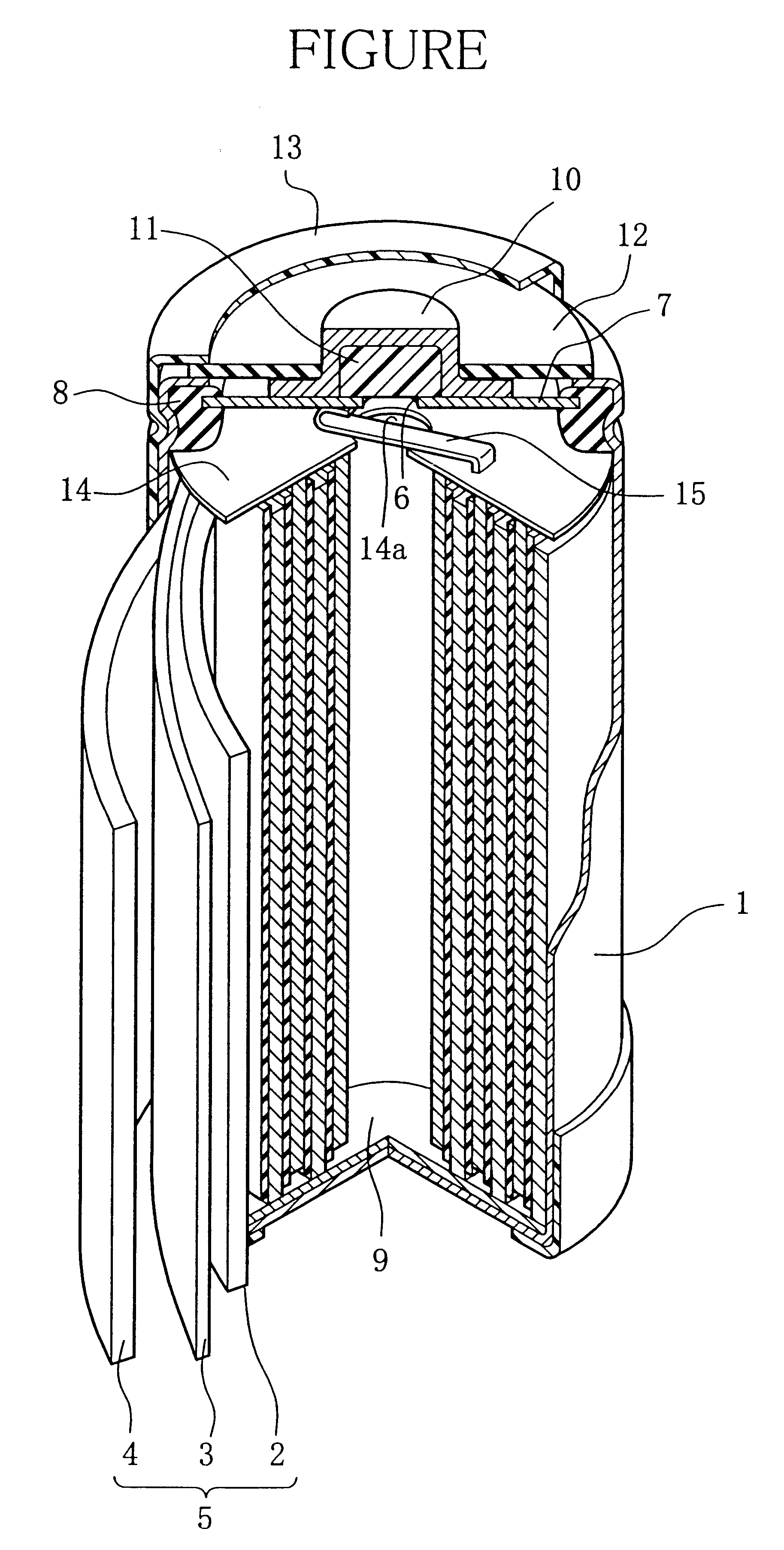Nickel-metal hydride secondary battery
a nickel-metal hydride and secondary battery technology, applied in the field of nickel-metal hydride secondary batteries, can solve the problems of lowering the discharge capacity, inability to achieve satisfactory improvement of self-discharge characteristics, and insufficient charging reaction of nickel hydroxide, etc., to achieve excellent self-discharge characteristics, high charging efficiency, and high utilization of active materials
- Summary
- Abstract
- Description
- Claims
- Application Information
AI Technical Summary
Benefits of technology
Problems solved by technology
Method used
Image
Examples
examples 92 to 99
Battery III was produced as follows.
In 1 N LiOH were dissolved KOH and NaOH so that the total alkali concentration of the resultant solution became 8 N, to thereby prepare a mixed aqueous solution, and in the mixed aqueous solution were Na.sub.2 WO.sub.4. 2H.sub.2 O and H.sub.2 WO.sub.4 in various amount ratios, to thereby prepare various alkali electrolyte liquids.
Then, using the positive electrode and the negative electrode used in Example 1, between these electrodes was disposed the separator shown in Table 8, to thereby produce an electrode group. And the electrode group was accommodated in a battery casing together with 2.8 ml of the above-mentioned alkali electrolyte liquid, to thereby assemble a battery shown in FIGURE.
With respect to each of the obtained batteries, the initial utilization and the self-discharge characteristics were measured in the same manner as in Examples 1 to 41, and the high temperature charging efficiency and the large current discharge ratio were measu...
examples 124 and 125
Active material powders were prepared in substantially the same procedure as in Example 102 except that the amount of the cobalt monoxide added was changed to 0.3 part by weight and 21 parts by weight, respectively, and batteries were assembled in the same manner. With respect to these batteries, the characteristics and the x values are shown in Table 12.
From Tables 9 to 12, the following is apparent.
(1) A comparison is made between Examples wherein Na is contained in the active material powder and a tungstic acid ion is contained in the electrolyte liquid and Comparative Examples which do not satisfy the above requirement. In each of the above Examples, the utilization of the active material is maintained at a high level even in accordance with the progress of the charge-discharge cycle, and the capacity maintaining ratio is also maintained at a high level. That is, the present invention is apparently advantageous.
(2) However, as apparent from the comparison between, for example, a...
example 140
In the production of the battery in Example 129, the amount of the alkali electrolyte liquid charged was reduced to 1.1 cm.sup.3 / Ah, and the volume of the positive electrode accommodated was increased so as to make up for the reduced amount of the alkali electrolyte liquid, to thereby assemble a battery.
The capacity became 1,830 mAh, that is, 8% larger than the capacity in Example 129. It is noted that the levels of the characteristics of this battery were similar to those in Example 129.
PUM
 Login to View More
Login to View More Abstract
Description
Claims
Application Information
 Login to View More
Login to View More - R&D
- Intellectual Property
- Life Sciences
- Materials
- Tech Scout
- Unparalleled Data Quality
- Higher Quality Content
- 60% Fewer Hallucinations
Browse by: Latest US Patents, China's latest patents, Technical Efficacy Thesaurus, Application Domain, Technology Topic, Popular Technical Reports.
© 2025 PatSnap. All rights reserved.Legal|Privacy policy|Modern Slavery Act Transparency Statement|Sitemap|About US| Contact US: help@patsnap.com


